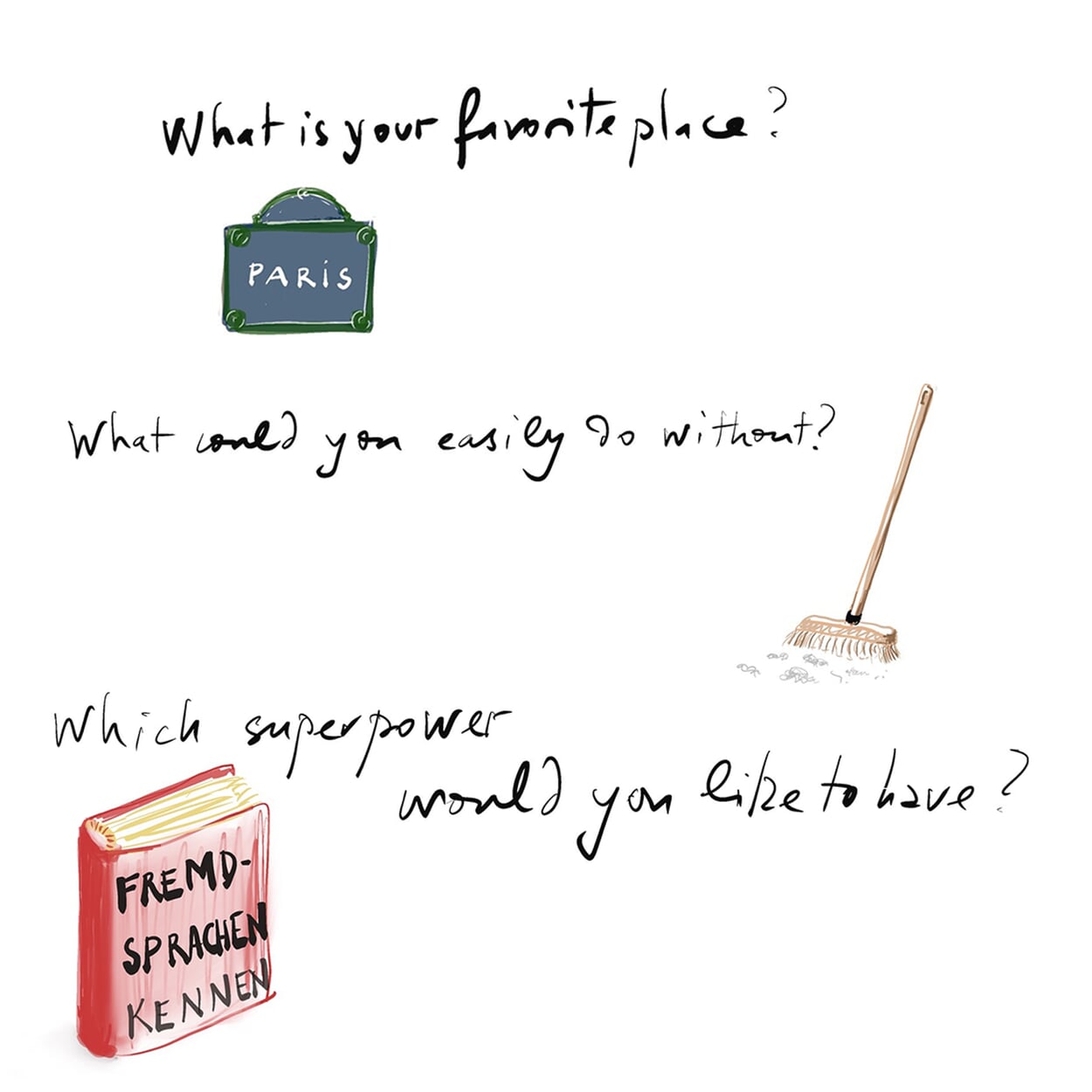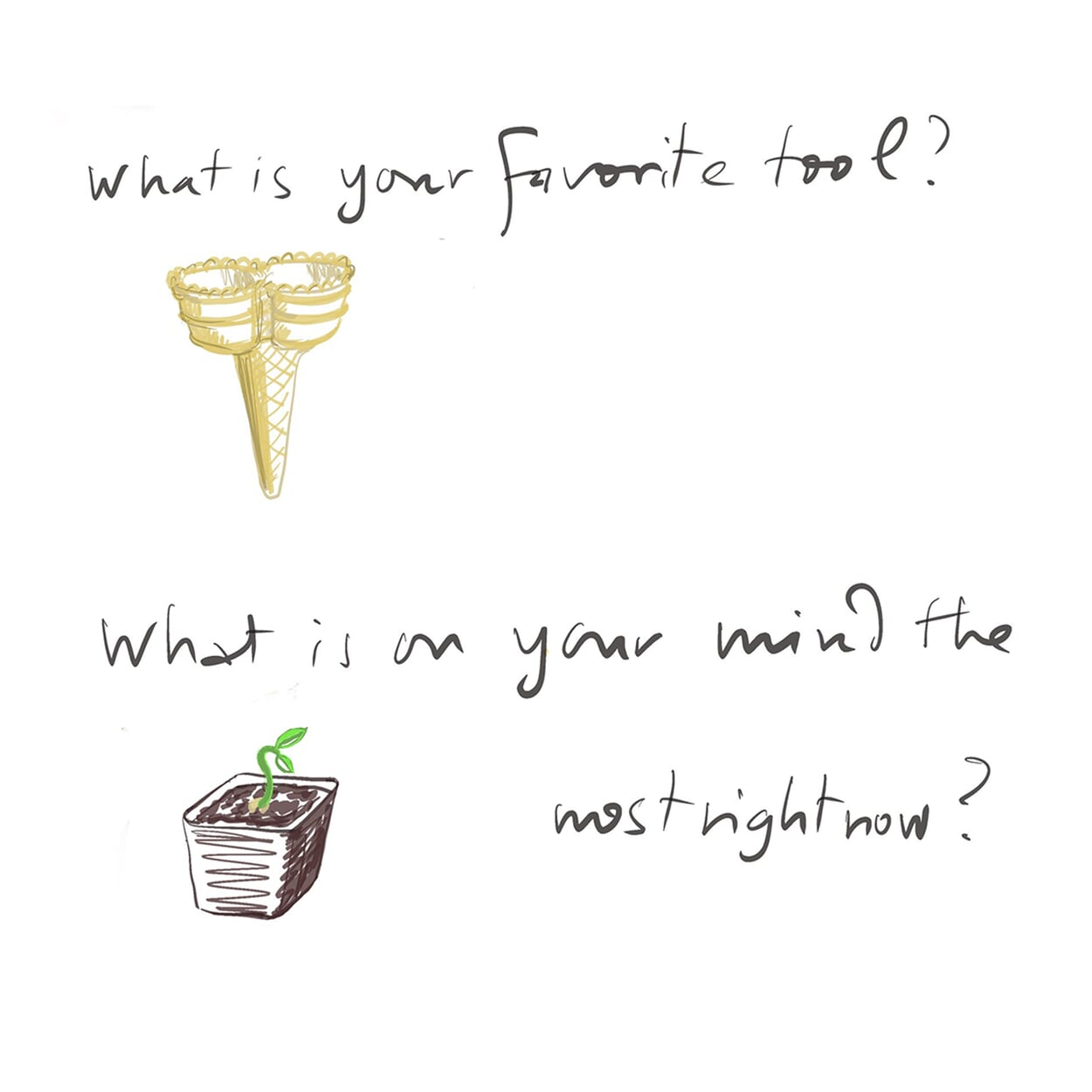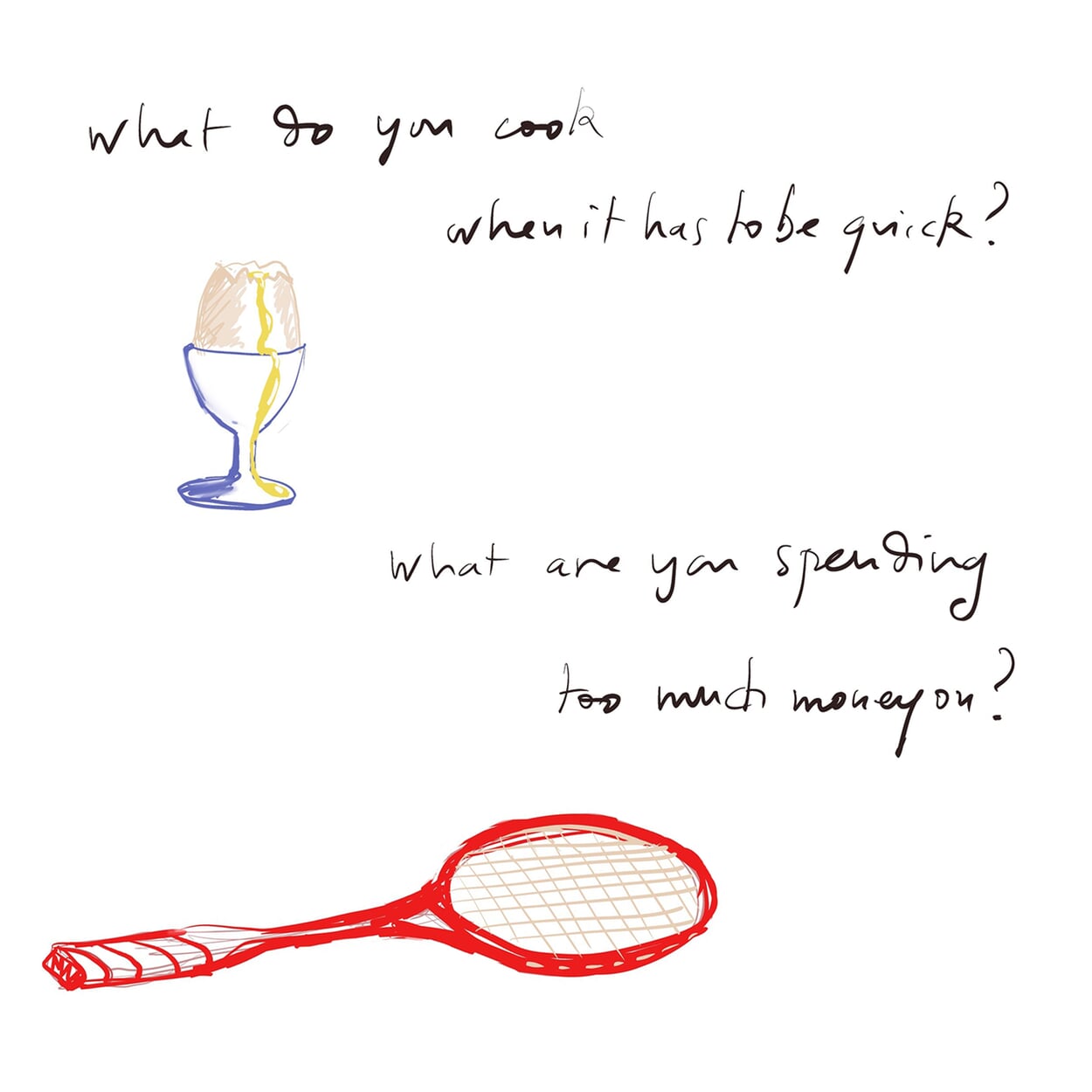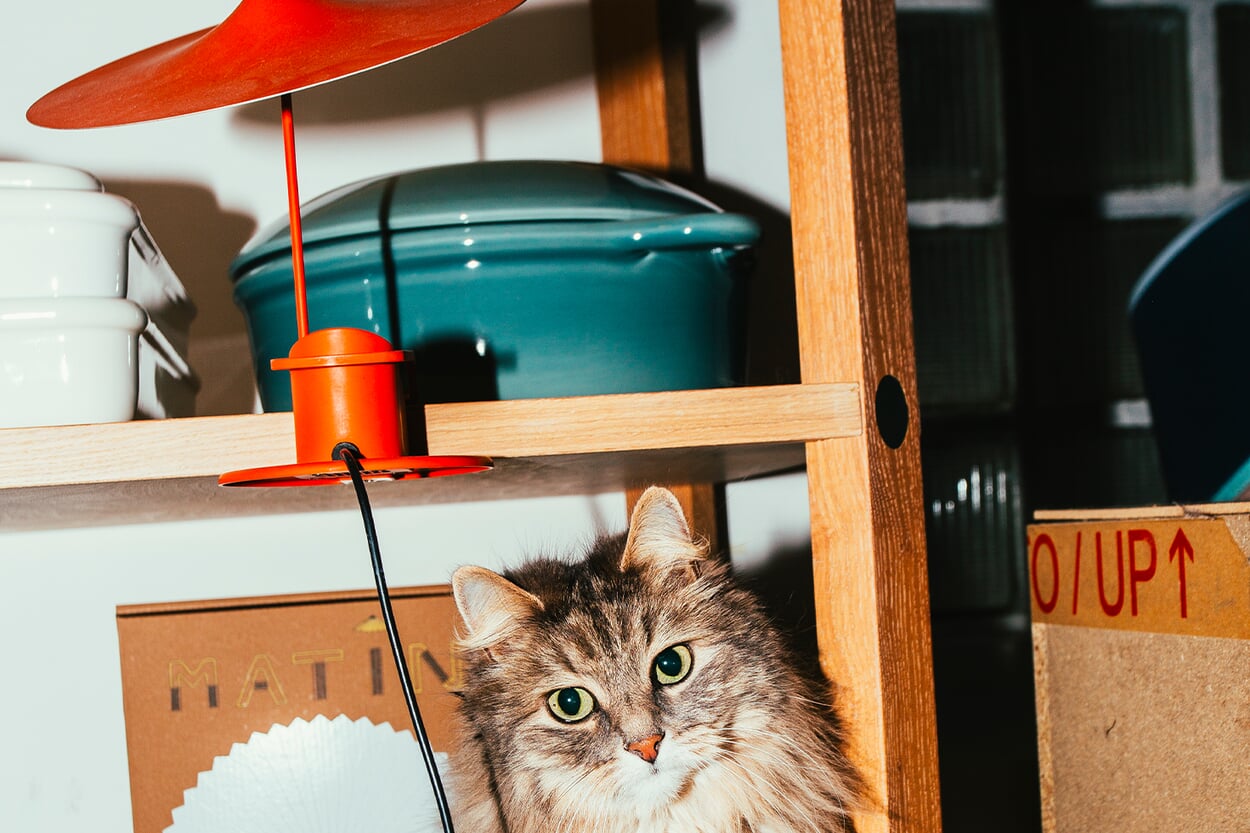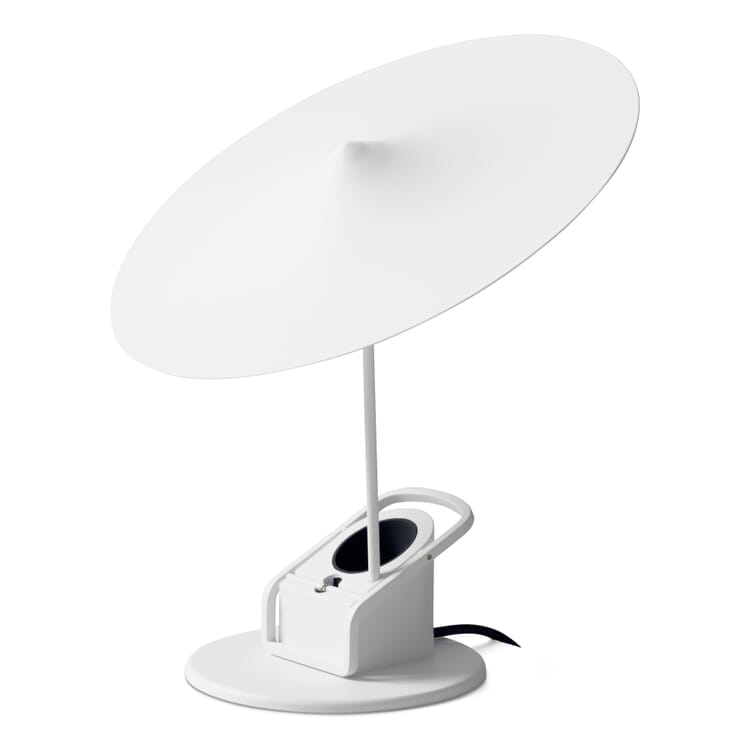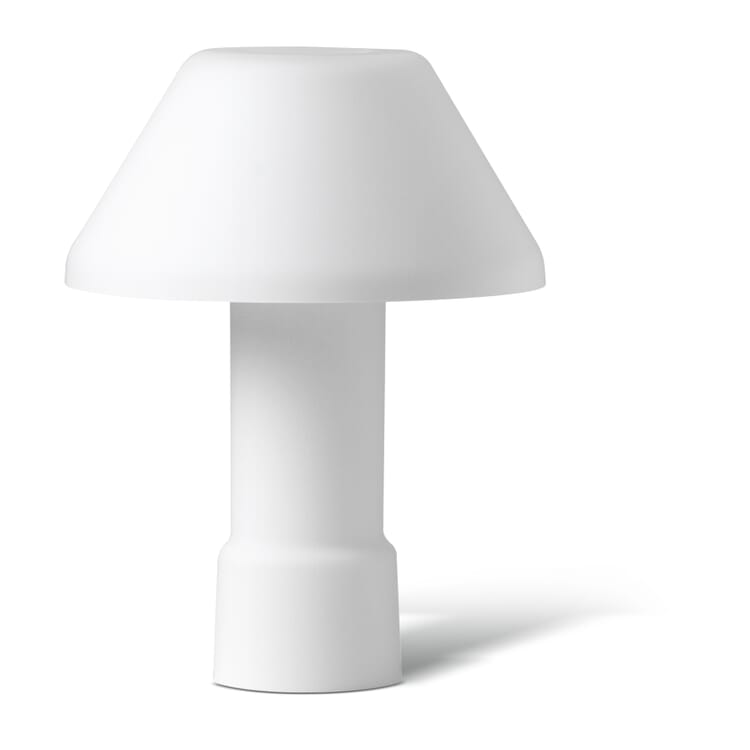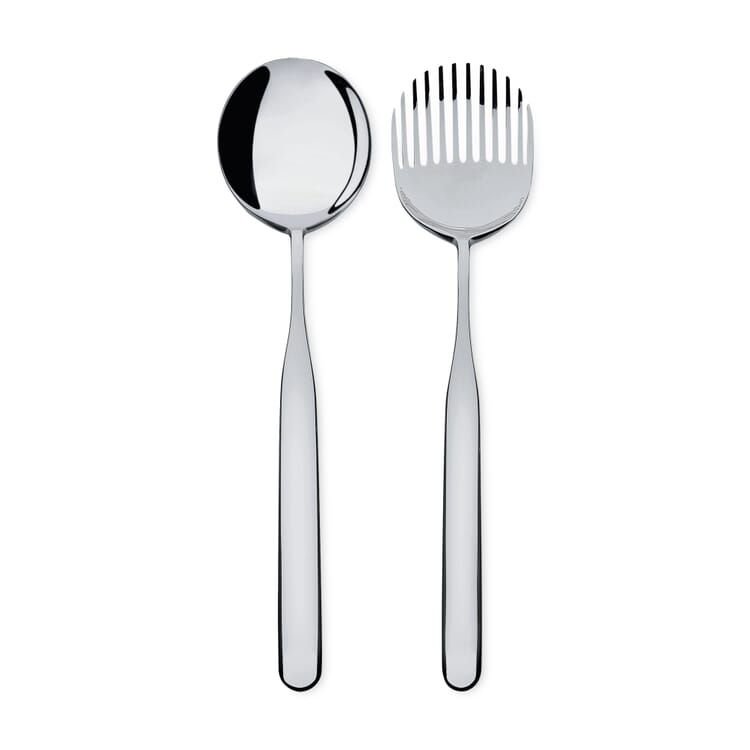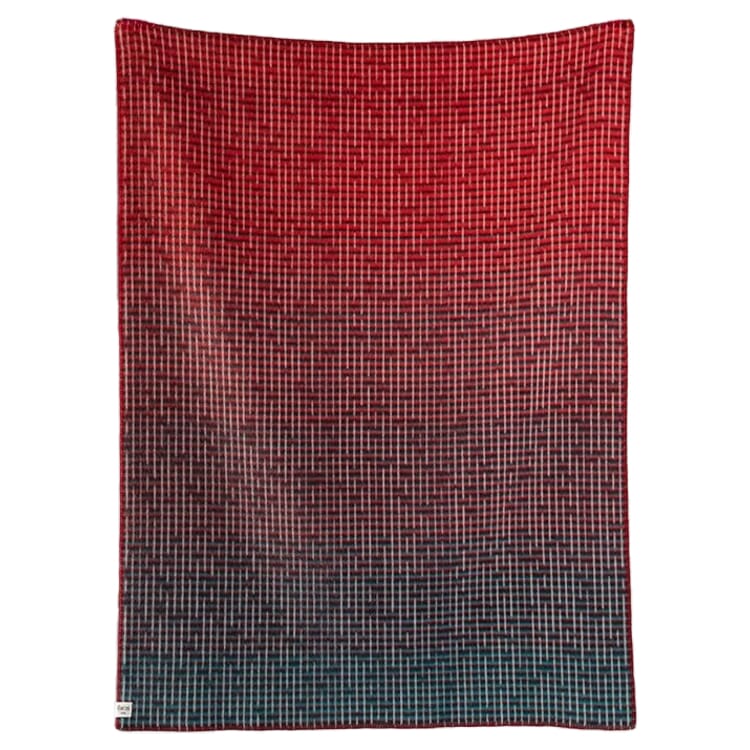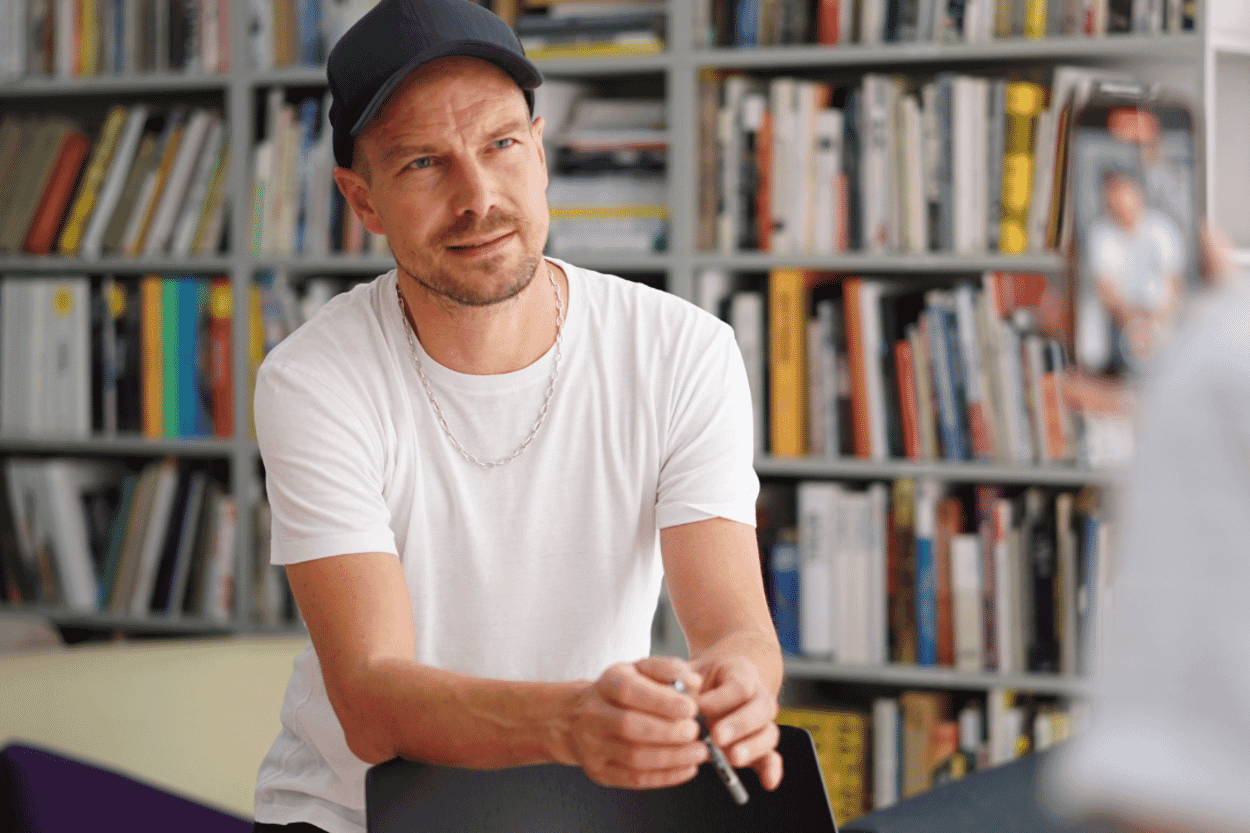Inga Sempé: "You don't have to be convinced of your own work"
She likes going to flea markets and loves designing lamps, but the great masters of design history? "No!" They don't interest her. French designer Inga Sempé is not afraid to be uncomfortable and non-conformist. And she likes to disagree. We visited Sempé in her studio in Paris and talked to her about too little money and too much self-confidence.
Text: Jasmin Jouhar
Why did you originally become a designer?
Why don't all people want to become designers, because we are all surrounded by objects all the time. And not by animals or plants, as if we were living in a forest. I'm always surprised that journalists ask this in an interview.
But most people hardly pay attention to the things around them unless they don't work properly or break.
That's true. But even as a child, I used to watch my parents when they were drawing and something didn't turn out the way they wanted it to. Or take a book, most people don't think about how much work goes into it when they buy it, like the hassle with the publishers and printers. I was always aware of that. Anything that looks good needs hard work to look good.
What else shaped your understanding of design?
My education began as a child of my parents, who were very decisive in their judgments of taste, of what they liked or didn't like. We often went to the flea market with my mother. Mostly to the Marché Puces de Vanves in the south of Paris, where we lived. A very friendly, small and simple flea market, I still go there sometimes and look at all the everyday objects. Sometimes I buy something, often small things, but mostly I just look. That's my culture, I acquired my visual knowledge at the flea market. I also used to do a lot of research on eBay. With a quick search, you can see all the products of a certain typology, even those that have long since been discontinued - without hierarchy, without judgment. I'm interested in the Objekten itself, not in the culture of design.
What do you mean by that?
I either like an object or I don't, but I don't read books about design. I can't tell you the names of the famous designs by Mies van der Rohe or Achille Castiglioni and from when to when and by whom they were produced. I'm not interested in the "great masters", I don't like it when it gets too academic. I never attended the design history lectures at university.
What interested you most during your studies?
When I came to university, I knew nothing about materials. I was good at sewing and working with paper, but otherwise I had no knowledge of manufacturing techniques, you don't learn that at flea markets. That was the only thing I was interested in at university, what I really wanted to learn. I spent a lot of time in the workshops, working with wood, metal and plastic.
Inga Sempé
The 56-year-old is not only France's best-known contemporary designer. She is also one of the few women of her generation to have made a name for herself internationally. Sempé designs furniture, lighting and everyday objects for companies such as Wästberg, Hay, Alessi and Reform. Her parents are the Danish artist Mette Ivers and the French illustrator Jean-Jacques Sempé.
After your studies, you worked for six months in the studio of Australian industrial designer Marc Newson.
Yes, he had a studio in Paris at the time and hardly earned any money. I learned a lot from him because I was responsible for developing some of his designs to series production. This taught me that as a designer, you have to be able to understand every step of the production process. Otherwise, your design may be changed by other people. You don't have to be an engineer, but you do have to be familiar with the manufacturing processes and understand what is possible and what is not. If someone from the industry then says it can't be done, then you know whether the person is just a bit lazy or whether a design really can't be implemented that way.
How important is it for you to work with manufacturers from the industry?
Visiting companies, looking at factories, that's the most interesting part of the work for me. But I never go to exhibition openings. In the factory you see people at work, at the machines, you can feel the atmosphere, you get to know the culture of a company. That's also the great thing about working with Italian companies. You can usually see the place where the items are made. I can try things out there and immediately realize whether a design can be produced the way I want it or not.
7 questions for Inga Sempé
What is your favorite type of product to design?
I am really interested in luminaires. It's one of the few product typologies that can be very small but also very big, like a luminaire for a train station. Many designers are obsessed with designing chairs. But chairs always have the same proportions. They have to fit people's butts, so there is little room for variation. But light is a huge cosmos, I could design many lamps every year
You have already developed several lamps for Wästberg. Why do you like working with the Swedish company?
Many years ago, I was at the furniture fair in Stockholm. There I discovered the stand of a lighting manufacturer that looked interesting - it was Wästberg. But I didn't dare go there. A few months later, Magnus Wästberg called and asked for a meeting. It sounds like a fairy tale now, because it never works out like that. But it was exactly the same with Wästberg. We were sitting in a restaurant, I was sketching a lamp on a paper napkin that I'd had in my head for a long time. And he said, okay, let's do it. And then everything happened very quickly, after a year the luminaire was finished and in production. It never really works like that. Magnus loves light and luminaires, his father already had a company in the sector.
Why does it usually not happen so quickly?
The production of luminaires is not easy, there are a lot of rules and standards. And the standards change from country to country, which is very complicated. When I think back to my first luminaire for Wästberg, I realize how much light sources have developed since then. And the LEDs come from China, you have to live with that. Since the light bulb disappeared, it has become more difficult You have also designed lights and other products for the Danish brand Hay Rolf and Mette (the founders of Hay, Rolf and Mette Hay) really love things, whether it's a small paper clip or a whole wardrobe system. Working with them means working with two people with a real passion for things. In design, you get the best results anyway when you are directly involved with the management of a company.
Do you have many of your own designs at home?
In any case, I don't buy new lights, I really have enough lights (laughs). If anything, I would only buy a lamp from a flea market anyway. I generally don't buy anything new, not even clothes.
Do you sometimes feel trapped in the world of furniture and beautiful objects?
Not necessarily trapped, but it is a world of its own. For some people, design is perhaps a bit snobbish because of this. In any case, I would be delighted if a company asked me to design screws. When I was younger, I didn't want to design furniture, but handles, tools, things like that. But as a freelance designer, it's hard to get into these industries.
How long did it take you to establish yourself as a freelance designer anyway?
It took at least five years, actually longer. And for a long time I earned more from teaching and workshops than from products and furniture. The design industry is often fake, it looks like you're rich and famous because your designs are printed in the press. But the truth is that you only sell three copies a year and don't earn any money.
Was there a moment where you thought: Now I've made it?
No. About every three years I think I should stop because the income has gone down again. It really isn't a normal job. But because of my parents, I've known the ups and downs of creative jobs since I was a child. You know, I'm often asked what advice I would give young designers. It is often said that you need self-confidence, that you have to be convinced of your own work, but that's not true. A lack of self-confidence allows you to develop more interesting things. People who have great self-confidence often do boring things, repeat themselves or copy. Because they are so convinced of themselves, they are not searching.
Pictures: Lorraine Hellwig
Illustration: Inga Sempé
Products from Inga Sempé
Discover more designers
In Rennertshofen, a 20-minute drive from Neuburg an der Donau, which in turn is half an hour from Ingolstadt, you can live without the stress of the big city. Juliane Lanig and Moritz Schmidt also appreciate this: the couple designs products here that are holistic in the best sense of the word - including the MAGAZIN bed HANS.
The young designer Julia Dichte has developed a contemporary table linen series for MAGAZIN. EQUIPE is produced by a French weaving mill.
Globalization, says Stefan Diez, is not a bad thing per se. But if it only leads to cheap production, it prevents innovation and destroys the know-how of local companies.







